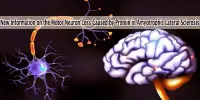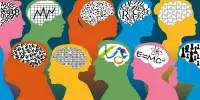The suprachiasmatic nucleus (SCN) is a small, paired structure in the brain’s hypothalamus, just above the optic chiasm. It is a small region of the brain located directly above the optic chiasm in the hypothalamus. In mammals, the SCN is the primary circadian pacemaker, responsible for generating circadian rhythms. The SCN is critical in the regulation of circadian rhythms, which are the roughly 24-hour cycles that govern various physiological processes in living organisms such as the sleep-wake cycle.
The SCN can coordinate the body’s subordinate cellular clocks and entrain to the environment by receiving light inputs from photosensitive retinal ganglion cells. It generates neuronal and hormonal activity that regulates many different body functions on a 24-hour cycle.
Robert Moore proposed that the SCN is the main circadian pacemaker in mammals after conducting experiments with radioactive amino acids to determine where the retinohypothalamic projection terminates in rodents. Early lesioning experiments in mice, guinea pigs, cats, and opossums demonstrated that removing the SCN results in the ablation of the circadian rhythm in mammals.
Key features and functions of the suprachiasmatic nucleus include:
- Circadian Rhythm Regulation: The SCN functions as the body’s internal clock, coordinating various physiological and behavioral processes to keep the day-night cycle in sync. It receives information about light and darkness from the eyes’ retinas, assisting in the synchronization of the internal biological clock with the external environment.
- Input from the Retina: Ganglion cells, which are light-sensitive cells in the retina, provide input to the SCN. Light exposure, particularly in the morning, aids in the resetting of the circadian rhythm, influencing the sleep-wake cycle.
- Output to the Pineal Gland: The SCN sends signals to the pineal gland, which influences melatonin secretion. Melatonin is a hormone that regulates sleep-wake cycles by suppressing production in response to light and increasing production in response to darkness.
- Control of Body Temperature: The circadian rhythm of body temperature is also influenced by the SCN. Body temperature tends to be lower at night and higher during the day, reflecting the internal clock of the body.
- Regulation of Hormonal Secretion: The SCN influences the circadian release of various hormones, including cortisol and prolactin. This has an impact on processes such as metabolism and reproduction.
Disruptions to the normal functioning of the suprachiasmatic nucleus, such as those caused by shift work, jet lag, or certain medical conditions, can cause circadian rhythm disturbances and have an impact on sleep, mood, and overall well-being. Understanding the SCN’s role has implications for treating sleep disorders and improving treatments for conditions influenced by circadian rhythms.
















